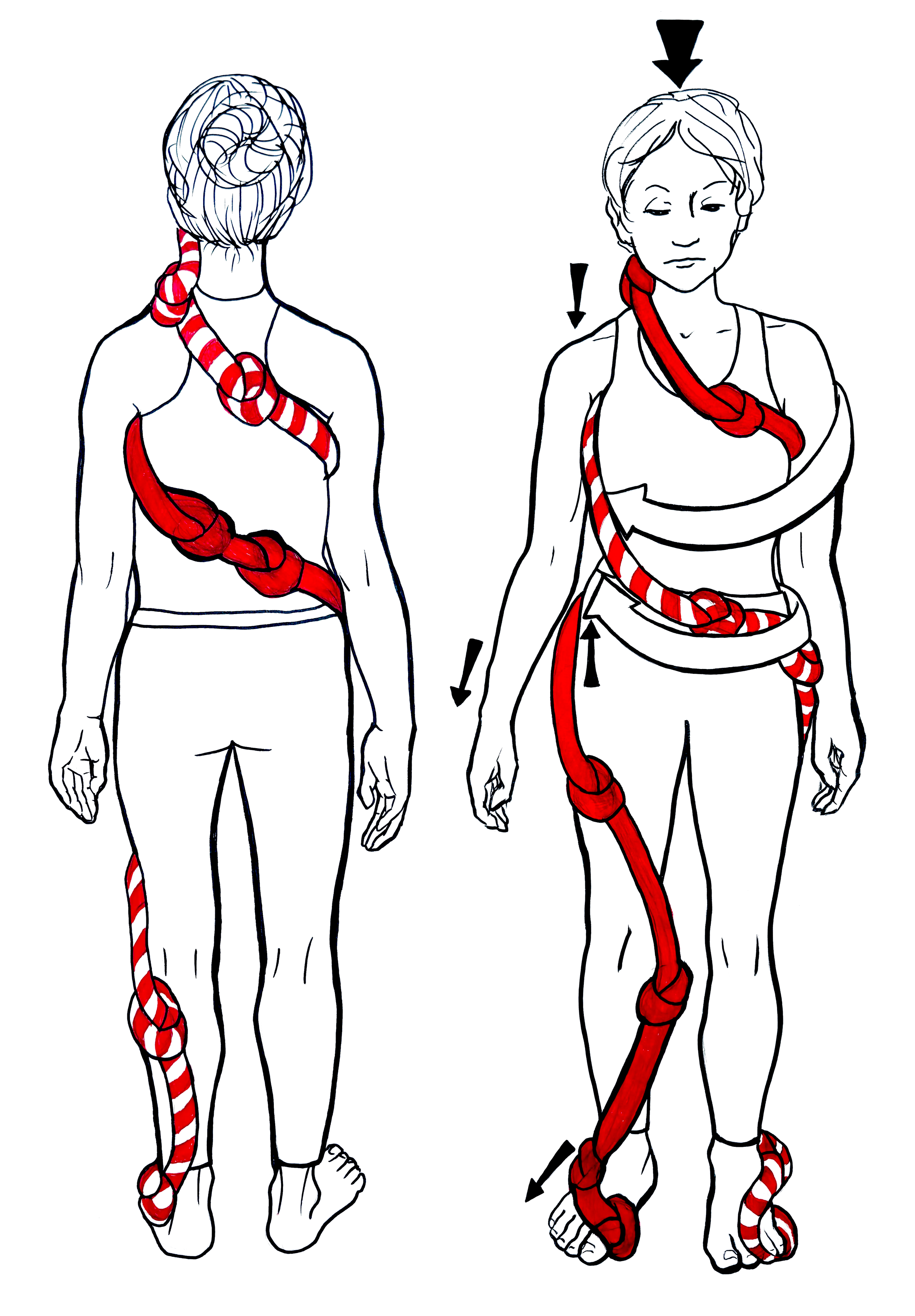Empirical
The adjacent image shows two spirals of muscle holding, one at the front (anterior) of the body and the other at the rear (posterior). This double-spiral illustration is based on the work of the Australian-born anatomist, Professor Raymond Dart (1893-1988). Dart was influenced by the work of F.M. Alexander (1869-1955), founder of the Alexander Technique.
Right-handers overwhelmingly twist from the left to the right. The left shoulder, torso and hip rotate to the right as the head, too, tilts in that direction. The right shoulder drops and the right hip rises, shortening muscles on that side of the body. The right foot frequently splays out further than the left in response to disproportionate weight being driven through the right leg.
These postural features often exhibit themselves in people diagnosed with spinal scoliosis or twist.
In 2015 the prestigious Annals of Internal Medicine reported the results of a randomized clinical trial of 517 participants suffering from neck pain for an average of 6 years. The group taking 20 Alexander Technique sessions reported a 31% sustained reduction in pain and associated disability.
In 2008 the respected medical journal BMJ published the findings of a 579-subject clinical trial. This review reported that 24 Alexander Technique sessions resulted in an 86% sustained decrease in participants’ chronic back pain.
Largely as a result of these clinical trials -as well as a smaller one for Parkinson’s Disease- the United Kingdom’s National Health Service now offers Alexander Technique sessions.
“The Alexander Technique is a safe and effective method for improving posture, reducing stress and supporting optimal health.”


